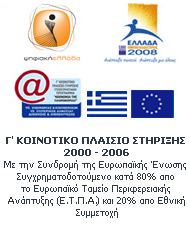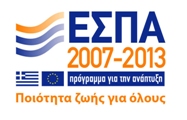Ancient History
All ancient writers, from Herodotus to Pafsanias, provide us with information about Palaio Faliro. So we know that the founder of Palaio Faliro was a local hero, FALIROS, son of Alcon and grandson of Erehtheas, the King of Athens, and that, according to tradition, he helped the Lapithes, along with Theseus, with their fight against the Centaurus.
It is said that Faliros was one of the Argonauts who took part in the Argonautic Expedition with Jason as their leader (1226 – 1225 B.C.), and that he also founded a colony in Southern Italy named FALIRON (Pafsanias, Attika, AI 4, Stravon n.246, Stefanos Vizantios, 656, s.v.p.).
Later this colony became the home for Greeks coming from Kymi, Halkida, Pithikouses, Athens and they named the town PARTHENOPI, honoring one of the Sirens, Parthenopi, who threw herself into the sea and drowned because Ulysses didn’t fall for her and her body washed up on this beach. On this beach was the Siren’s grave.
LOCATION OF ANCIENT FALIRO
The territorial range of Palaio Faliro in the ancient times seems to be the same as today. This is justified by the fact that the ancient Faliro was mentioned as the first and most ancient “seaport” of Athens. “The pier was at the point where the sea came closer to the city”. So, as it was mentioned by K. Papahantzis, it must have been where, during the Christian years, the small church of St. George was built and still stands until today (renovated in 1985).
Of course the port of Palaio Faliro must have been fairly big, since the port of Piraeus was not yet created and it began from Tzitzifies or the Delta area up to TROCADERO (as it was called in the past) and the area of the Flisvos Marina today. But even later, when Themistocles and later Pericles formed the Port of Piraeus, Palaio Faliro was still the second bigger port of Athens at all times.
The fact that the ancient Palaio Faliro was situated at the same area as today is also confirmed by the excavations by K.Kourouniotis in 1911 and Efstratios Pelekidis in 1915-16, as the Ancient Cemetery of Faliro was discovered between the area of the old Aircraft State Factory (KEA) and the Delta area (Hippodrome).
TEMPLES, MONUMENTS, CEREMONIES
Our ancient writers talk about important events in the mythological (prehistoric) as well as the historic period. They also mention temples, monuments, famous persons and religious ceremonies that took place in P. Faliro. So we know that Theseus set off from the Faliro Port for his journey to Crete, along with 7 young girls and 7 young boys, to kill Minotaur and relieve his country from this humiliating death toll.
And when he returned in triumph from Crete at the Faliro port, he sacrificed to Poseidon and the other gods showing his gratitude. From then on, they held nautical celebrations each year, the “Kivernisia”, to honour the two seamen Nafsithoos (captain) and Faiakas, that commanded Theseus’ ship.
PAFSANIAS (110-180 A.C.) who travelled through Attica (148-150 A.C.) mentions that Faliro was still one of the four ports of Athens and that the Themistocles Wall was destroyed. But the GATE OF FALIRO that leaded the way from Athens to Faliro, was saved, even though it was in ruins, as well as the Itonian Gates close to the Olympian Zeus Columns.
We can understand the importance of the Faliro Port also from another fact: The FALIRO WALL, which was built (Thoukididis, II.13) for the protection of the port, was 35 stadiums long (1 stadium=6,4 kms) and it ended up only to the Faliro Port. Pafsanias saw in Faliro the temple of Athena of Skiros, built, according to tradition, by Skiros, a diviner from the area of Dodoni. He also saw a temple of Skiros along with the two temples built for the sailors Nafsithoos and Faiakas, mentioned earlier.
FALIRO DURING THE PERSIAN WARS
When Herodotus describes in his “Persians” the battles between the Greeks and the Persians (490 – 179 B.C), he often refers to Faliro. After the glorious battle in Marathon (September 490 B.C.), the Persian fleet sailed by Sounio and moved towards Faliro in order to disembark the army and attack Athens before the Athenian army could return from Marathon.
However, Miltiades anticipated the Persian actions and convinced the Marathon warriors (exhausted from the ferocious battle) to put wings on their feet and return to Athens the same night, camping in the area of Kynosarghes. The Persians arrived with their ships in the Faliro Port at night, planning to attack the Athenians in the morning, at their own pace.
Indeed, they appeared in the open sea of Faliro the next morning but, as they saw the Athenians lined up ready for battle, they held their ships for a while and then turned away sailing off to Asia (Herodotus, v1,116). Ten years later, the Persians marched out once more against Greece. Following the Thermopyles battle and Leonida’s sacrifice, the Persian fleet arrives at the Faliro Bay. The Athenians had left their city for Salamina, Aigina, Poros, Trizina.
Xerxis went ashore in Tzitzifies (as it is called today) where he held a war council (21st September 480 B.C.). At the same time, the Greek headquarters held their meeting in Salamina. When night fell, the Persian infantry entered the empty city of Athens. The Persians set on fire the temples and the houses and enormous flames surrounded the Acropolis and spread until the suburbs. The Athenians, shocked by the view, watched in terror from Salamina.
The famous Naval Battle of Salamina took place the next day, the Persian fleet was routed and the Barbarians left sailing towards Faliro (Herodotus, vii, 91-92). From there they sailed with the highest possible speed to arrive at Ellispondos before the Greeks could catch up with them and destroy the rafts that Xerxis had used to bridge Ellispondos, thus putting the Persian fleet in a dramatic situation.
PERSONALITIES ASSOCIATED WITH FALIRO IN THE ANCIENT TIMES
Mousaios, Plato, Demosthenis, Dimitrios Falireus
The greatest of all philosophers, Plato, introduces his “Symposium” as a narration by Apollodoros, a friend of Socrates from Faliro, and his friend Glafkonas, while they were walking from Faliro to Athens (Plato’s Symposium, 1 or 172-173).
Another personality associated with Faliro is the masterly orator, Demosthenis. Showing uncompromising will and strength, he struggled with his numerous physiological and psychological problems, using his own methods.
History says that when the weather was stormy and the waves crushed on the beach in Faliro, he used to walk and deliver his own improvised speeches, thus wanting to practice and keep his cool while his loud fellow citizens, in the Municipality, could put him in an awkward situation.
FALIRO IN THE ROMAN AND PRE-CHRISTIAN PERIOD
Paul the Apostle in Athens
During the first Christian years around 50 A.C., about 100 years before Pafsanias, Paul the Apostle passed by the city of Athens. Of course he disembarked in the Port of Faliro (where the small church of St. George was built later) and from there he followed a country road to Athens
When he arrived in the area where today is the church of Agioi Theodoroi, he saw the temples for the unknown gods built by the Athenians, according to Pafsanias (Pafs. Attika, A 1, 4, Apostles’ Actions 17, 23). However, we know that the temples were at that spot because there are still 2 Ionian columns lying in the yard, along with other architectural parts that were used by the people as building materials.
Modern History
Modern History
Faliro, until around 1920, was a small seaside village. The houses were few and far between while there were infinite stretches of wheat, barley and oats as well as many vineyards. Some of the people were fishermen but most of them were farmers, shepherds and stock breeders
In 1883 the first transportation vehicle was inaugurated, connecting P. Faliro with Athens, named “Horse-ridden Railway”. Later, in 1890 horses were replaced by a steam machine, able to pull a few wagons at low speed. In 1910 the electric machines were introduced and the – familiar to us – TRAM.
In 1900 the first Greek zoo was created in Faliro but closed down in 1916 during the 1st World War, due to financial problems.
Around 1910 – 1915, many rich families, inspired by the natural beauty of Palaio Faliro, built their mansions and villas by the sea, thus changing radically the city’s image. Some of these buildings (e.g. the “Kouloura” mansion) are preserved until today.
In 1914 the first aviation school was transferred from Elefsina and the first school for aviation technicians was established in Faliro, whereas in 1925 the first state aircraft factory (KEA) was created by the English “Blackburn”. In the Delta area the first hydroplane airport was created, introducing, on the 1st August 1926, the first international airline Brindisi – Faliro – Istanbul.
At the same time and until 1918 the first school of P.Faliro operated in the backyard of Nikos Skordaras’ house.
Until 1920, the streets of Faliro were lighted by gas lanterns which looked like small art pieces. Made of iron, 3-mtrs tall and elegant, they carried underneath the embossed image of goddess Athina, standing with her casque, shield and spear.
In 1925 the Community of Palaio Faliro was established with the Presidential Decree 27/8/1925. At the same time, the Vourlopotamos area changed its name to Amfithea.
In 1942 Palaio Faliro becomes a Municipality (including the community of Kalamaki until 1945) with K.Toufexis as its first Mayor and in 1961 became an independent Municipality. From 1946 P.Faliro stands out because of its geographical position and becomes a suburb with many country houses made by rich families.
Later on, the city developed commercially as well because of the population moving towards the southern suburbs, winning a distinguished position in the inhabitants’ preferences until today (according to the real estate rates). P. Faliro is one of the areas in Athens with the highest prices per square meter.
The history of modern Palaio Faliro begins in 1/9/1942 with K.Toufexis as Mayor following the Presidential Decree (1465/1942) changing the community of P.Faliro into a Municipality.
At the time (census 1940) P. Faliro had 1.570 buildings and 8.302 citizens.
In 1951, there were 1.988 buildings and 12.894 inhabitants. The rapid development of the city had begun.
In 1961 there were 22.157 citizens, 35.066 citizens in 1971, 53.273 in 1981, 61.371 in 1991, while during the last census, in 2001, the citizens in our Municipality were 64.579.
Especially after 1974, a great number of Greeks from Istanbul came to live in Palaio Faliro, forming a very active and lively community.
Hereafter there is a list of all the Mayors of Palaio Faliro, from its establishment until today:
- K. Toufexis (1/9/1942 – 28/1/1945)
- Κ. Dais (29/1/1945 – 11/2/1946)
- Α. Magriplis (11/2/1946 – 11/4/1946)
- Κ. Dais (11/4/1946 – 17/6/1946)
- J. Davaris (17/6/1946 – 9/8/1950)
- G Sakellariou (17/8/1950 – 24/5/1951)
- J. Lappas (24/5/1951 – 9/6/1959)
- Ν. Psarakis (9/6/1959 – 25/5/1970)
- Ε. Zisimopoulou (29/5/1970 – 13/7/1970)
- S. Blahopoulos (13/7/1970 – 17/9/1974)
- G. Hronopoulos (17/9/1974 – 24/9/1974)
- D. Bavarezos (24/9/1974 – 6/4/1975)
- D. Kapsanis (6/4/1975 – 31/12/1986)
- G. Chrisoveridis (1/1/1987 – 31/12/1998)
- D. Kapsanis (1/1/1999 – 31/12/2002)
- D. Hatzidakis (1/1/2003 – )
Through the years, all the Mayors have contributed to the complete change of P.Faliro. The city streets were covered by asphalt and were lighted, playgrounds and lovely squares were created. The coast changed without losing its beauty and glamour while sport fields and shopping malls were constructed.
In 10/2/2008, on a 13.000m2 area between Flisvos and the marina on Posidonos Avenue, the biggest playground of the Balkans was inaugurated, giving the opportunity to children and their parents to enjoy a few hours of fun, so close to the seaside.
The Municipality also has a wonderful marina, the old battleship “Averof” which is a historical museum of priceless value while the “Planetarium” is considered as a unique cultural center.
Today, Palaio Faliro is an “Olympic Municipality” completely transforming the area with all the Olympic works, thus creating an enormous heritage for Palaio Faliro with new sport fields, renovations, new streets and transportations






